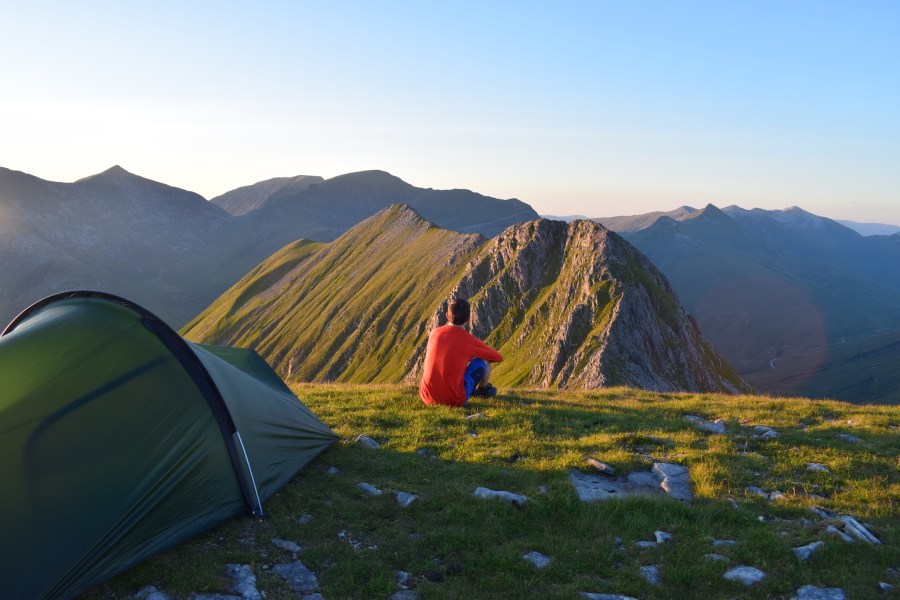The UK’s hills and mountains are likely to be exceptionally busy this summer – but it’s always possible to find quiet corners. James Forrest rounds up his top tips for dodging the summer crowds.
PHOTOS: James Forrest
-
Avoid the mountain ‘rush hour’
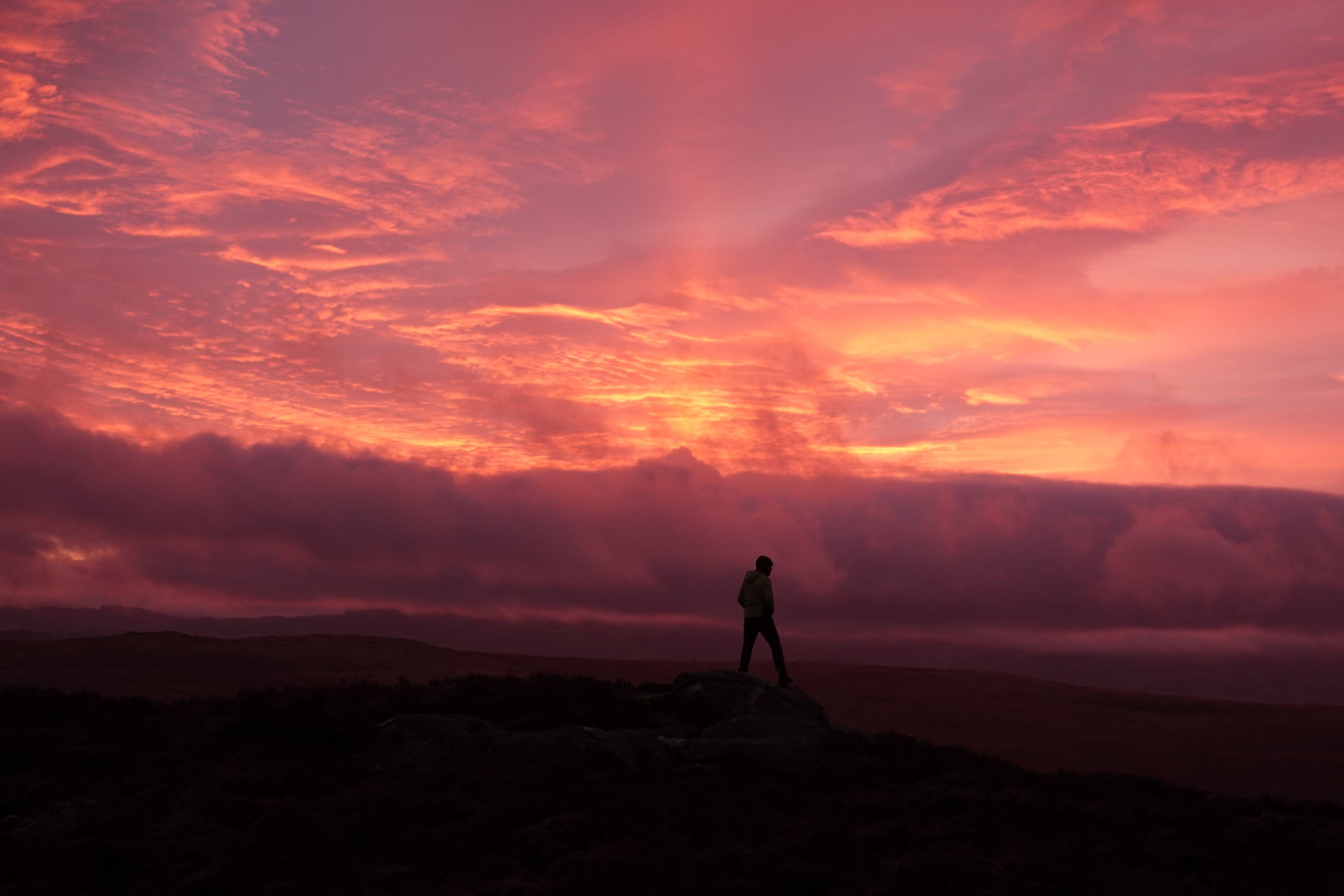
Hiking in the Arenigs at dawn
Most hillwalkers are active between 9am and 5pm. But walk outside these hours and you’ll find the hills are far less crowded places. In summer, if hit the trail pre-dawn and you can be up and down a mountain before most people have even arrived in the car park. Or, if the thought of a 4am alarm is anathema, plan a mountain ascent at sunset or after-dark instead. Rory Southworth, an Ordnance Survey GetOutside champion, says: “After the sun has set and everyone else is home, I grab my headtorch and get the hills all to myself – the perfect way to escape the crowds.”
-
Prioritise midweek and off-season
For obvious reasons, the mountains are always busier at weekends, on bank holidays and during the school holidays. Head to Snowdon on a Saturday in August and it’ll be like Piccadilly Circus; but climb it on a random Tuesday in mid-October and the crowds will have dissipated. The shoulder seasons – April to June and September to October – are a good bet for quieter hills, while a Tuesday to Thursday midweek break is less likely to be heaving than a weekend getaway. Job commitments might prevent such an approach, but perhaps you can strategically book some annual leave.
-
Pick your mountain range wisely
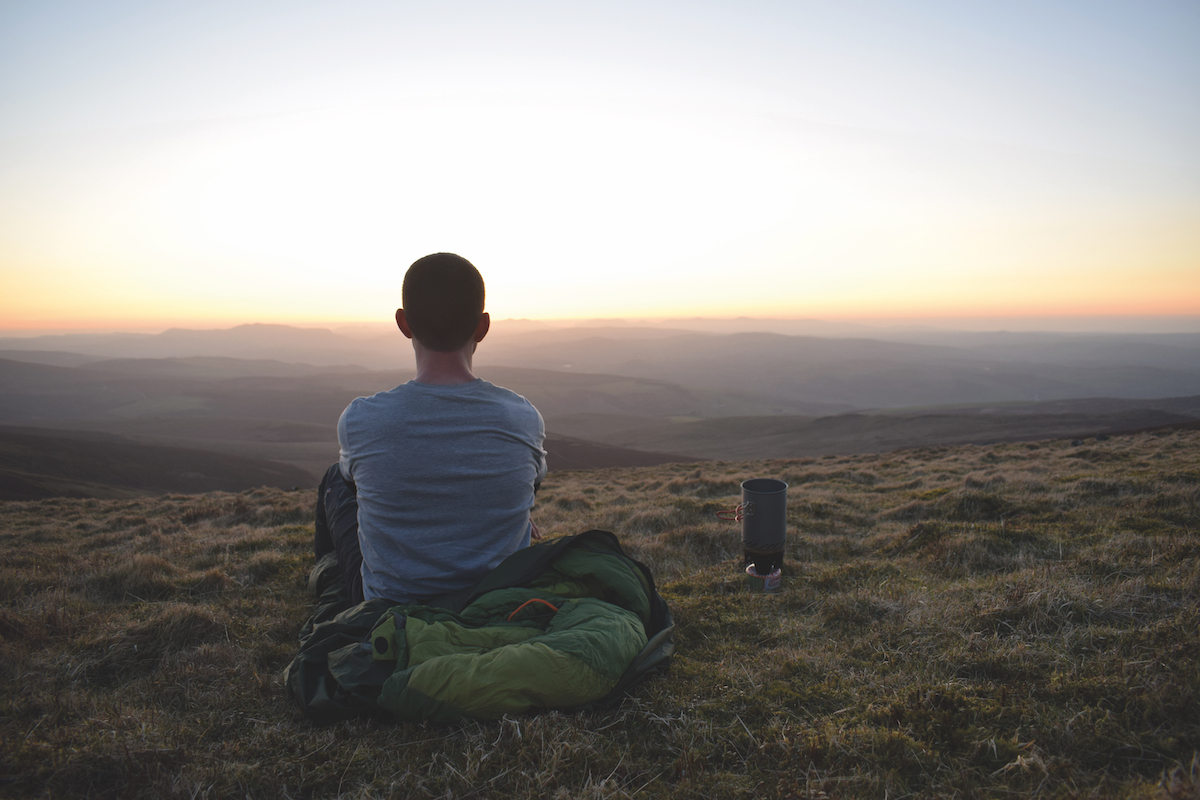
Bivvying and watching the sunset from Cadair Berwyn
Those perennially-popular mountain ranges – places like Glen Coe, the Ogwen Valley, Helvellyn and the Yorkshire Three Peaks – will be swarming this summer. So instead why not explore a less fashionable mountain range? The untrendy bits between national parks, those out-on-a-limb peaks most people ignore, and that ‘I’ll do it one day’ grassy hill you never quite get around to. Author Ronald Turnbull suggests the Cheviots, Mendips, Durham Dales, Welsh Marches, the Berwyns, Back o’ Skiddaw, fells and South Pennines – the latter being busier with ‘peaty sheep’ than it is with humans.
-
Shun Alfred and Sir Hugh
Peak-bagging lists like the Wainwrights and Munros have gone ‘mainstream’ over the past few years, adding to congestion on these tick-list mountains. A better bet this summer would be to avoid the famous 214 and 282 peaks respectively, and instead choose a lesser-known mountain checklist. In the Lake District try the 541 Birketts or 116 Wainwright outlying fells; and in Scotland go for the Corbetts, Donalds or Grahams to dodge the Munros’ heavy footfall. Or, if you absolutely must bag a Scottish 3,000fter, choose strategically: when the famed Torridon trio are absolutely teeming, just to the south the Coulin Forest Munros will be all but empty.
-
Embrace the obscure and remote
If you’ve heard of the hill, avoid it. That’s a good mantra if you want to dodge the crowds. Instead set your sights on remote, secluded hills in the middle of nowhere. “I used to focus on the popular, busy peaks”, says Nuttalls-bagger Adrian Conchie. “But after discovering a list of obscure and little-known hills to ‘bag’ in quieter areas, I found a greater sense of solitude on my walks. The list gives you the motivation to bypass the honeypot mountains and instead explore places you’d otherwise probably never visit, such as the Cheviots or Pennines.”
-
Choose a lesser-known route
Climb Skiddaw from Keswick up the tourist path and you’ll be one link in a huge chain of hikers all marching the same way up the giant of the Lakes’ northern fells. But start from the north-west in Barkbeth, ascending via Randel Crag, and you’ll barely see a soul. The same is true of almost all mountains: some paths are well-known and popular, others feel hidden and less-frequented. Do your research and choose wisely. A technical route or scramble may prove less busy than an easier, well-maintained track suitable for tourists and day trippers.
-
Go wild camping
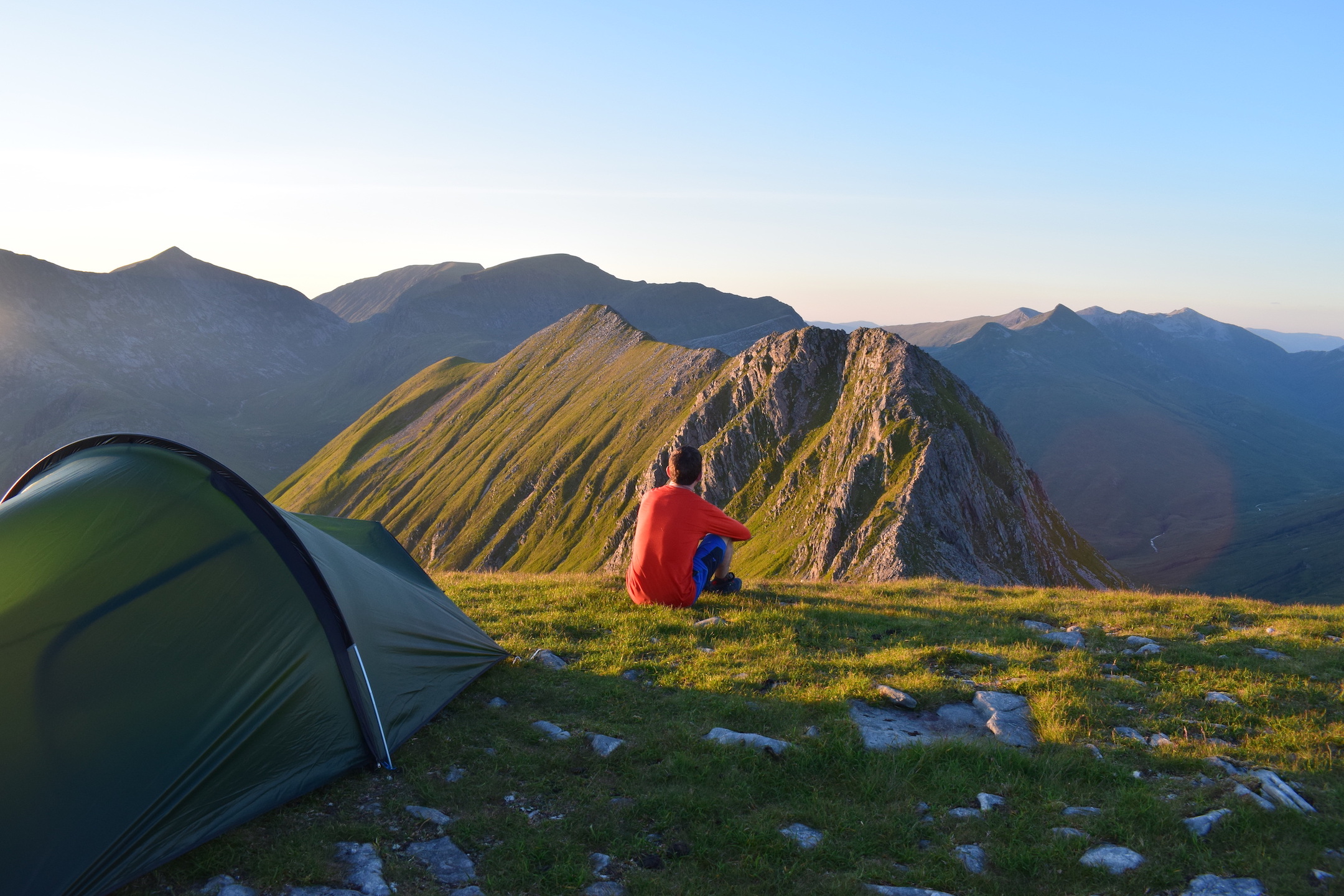
Wild camping in the Mamores
Wild camping is perhaps the ultimate get-away-from-it-all tactic in the hills. You’ll hike up at dusk, spend all night under the stars, and then walk out at dawn – making the most of the quietest times of day. But finding a tranquil camp spot can be tricky, with tarns and summits particularly busy. “I find heading cross-country across moorland is the way to go”, suggests prolific thru-hiker Kyle Lintern (better known by his trail alias Impala). “I use Google Earth to locate secluded, peaceful camp spots and then hoof it through the heather until I find nirvana.”
-
Do a long-distance walk
Long-distance walks can be quieter than day trails, because you’ll journey across those ‘no man’s land’ sections between popular areas. Avoid well-known trails like the West Highland Way and instead pick an obscure route from the Long Distance Walkers Association’s 1,600-long list. Will Renwick, president of Ramblers Cymru, says: “Walking the 298-mile Cambrian Way made me realise how many gloriously wild places can be found in Wales, away from the honeypot areas.” Komoot ambassador Nicola Hardy adds: “Create your own unique, bespoke trail by linking public footpaths together into a quiet, crowd-free itinerary.”
-
Head ‘off-piste’
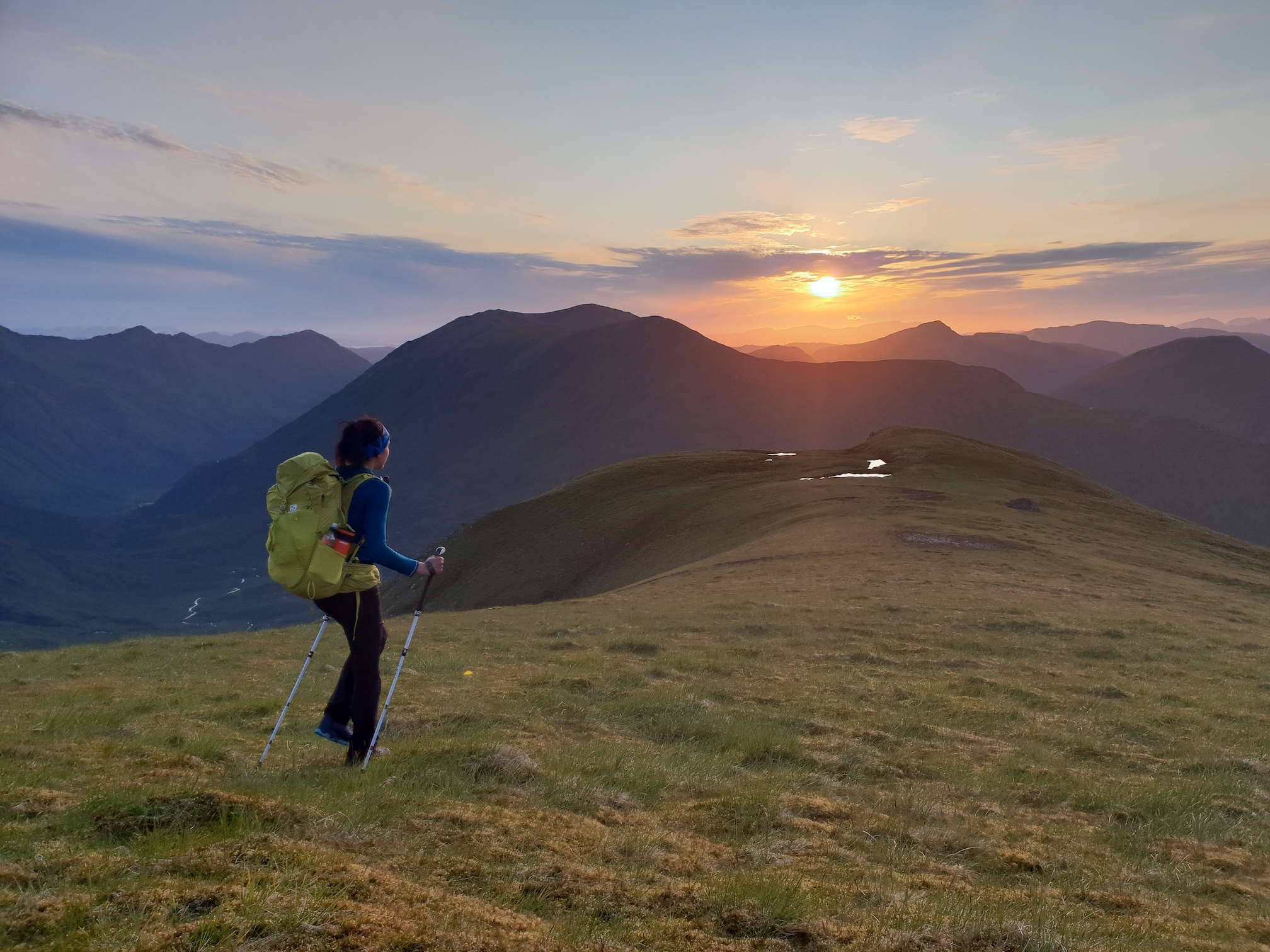
Hiking at dusk above Glen Affric
Most hikers stick religiously to well-worn paths in aim of a summit, but head off-trail in search of a random landmark and you’ll experience the quieter side of a mountain. Scott McAlister, of navigation firm NavTrek, says: “Learning the skills to interpret a map correctly will help you to head ‘off-piste’ and create your own trail. It’ll open up a new world of possibilities, such as ascending a pathless route, or planning a hike to an arbitrary or farflung point of interest, perhaps a waterfall, ruined barn or sheepfold, rather than plodding to the summit like everyone else.”
-
Don’t be a fair weather hiker
When the sun comes out, so do the crowds – there’s no avoiding it. But on grey, measly days the mountains are likely to be far quieter, and that represents an opportunity for the hardened hiker. If you’re lucky, the forecast might unexpectedly improve and you’ll get the sun-drenched ridges all to yourself. If the clouds never lift, well, at least you enjoyed some precious crowd-free hours in the hills. Obviously we’re not encouraging you to go scrambling on Aonach Eagach in a blizzard, but armed with good waterproofs and a positive mindset, the overcast hills can still be a joy.
-
Go the ‘wrong way’
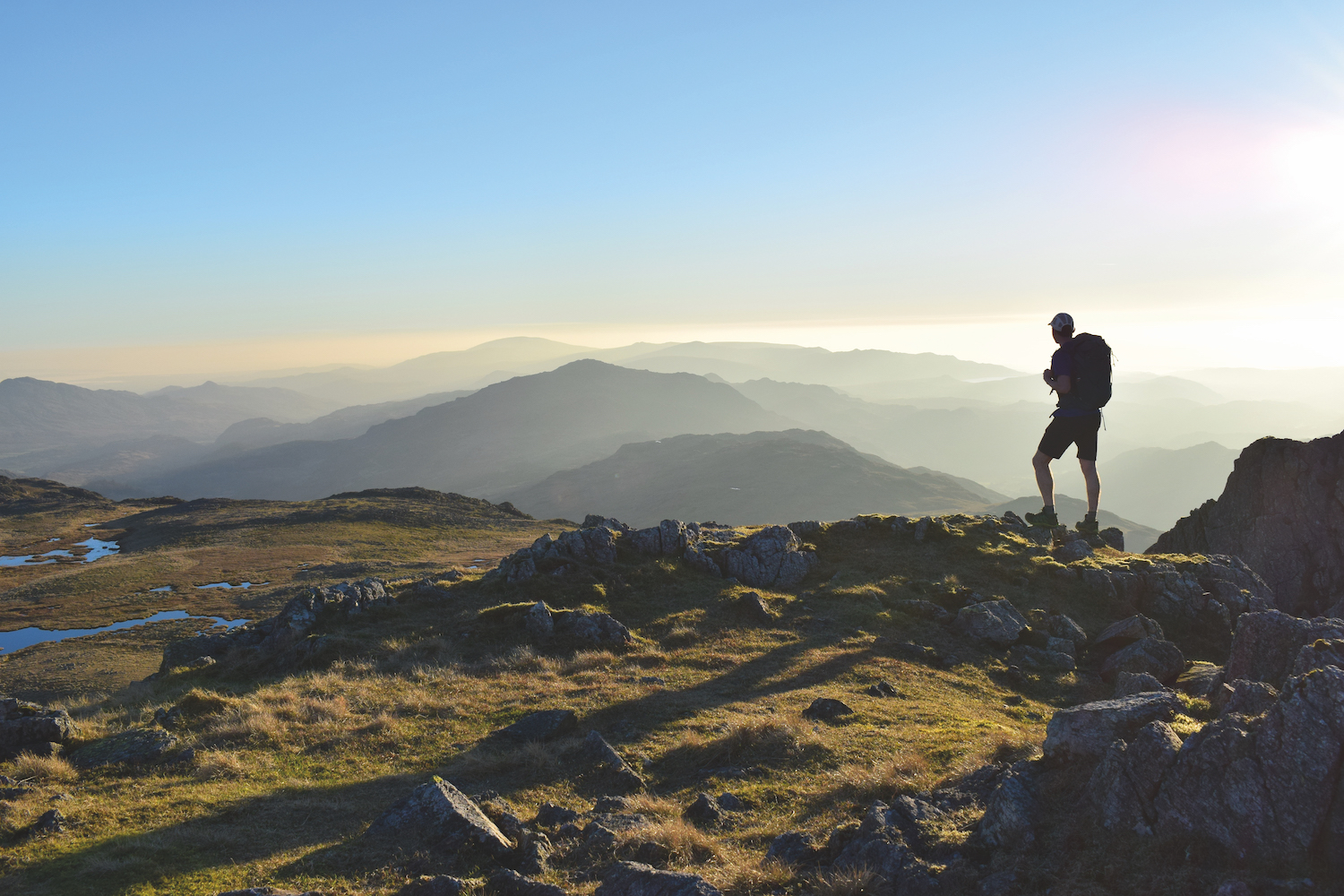
Feeling like the only person on earth on Crinkle Crags
Take a leaf out of Craig Weldon’s book, who has become an expert at tackling popular mountains like Creag Meag Meagaidh, Ben Nevis, Kinder Scout and Cadair Idris the ‘wrong way’ – his tongue-in-cheek term for the beautiful, lesser-known routes which are strikingly quieter than the hectic main paths up the hills. Check out the new issue of The Great Outdoors for his feature on the subject, with guides to six of these overlooked gems – plus loads of other great content and advice for how to escape the crowds and find your own path.

